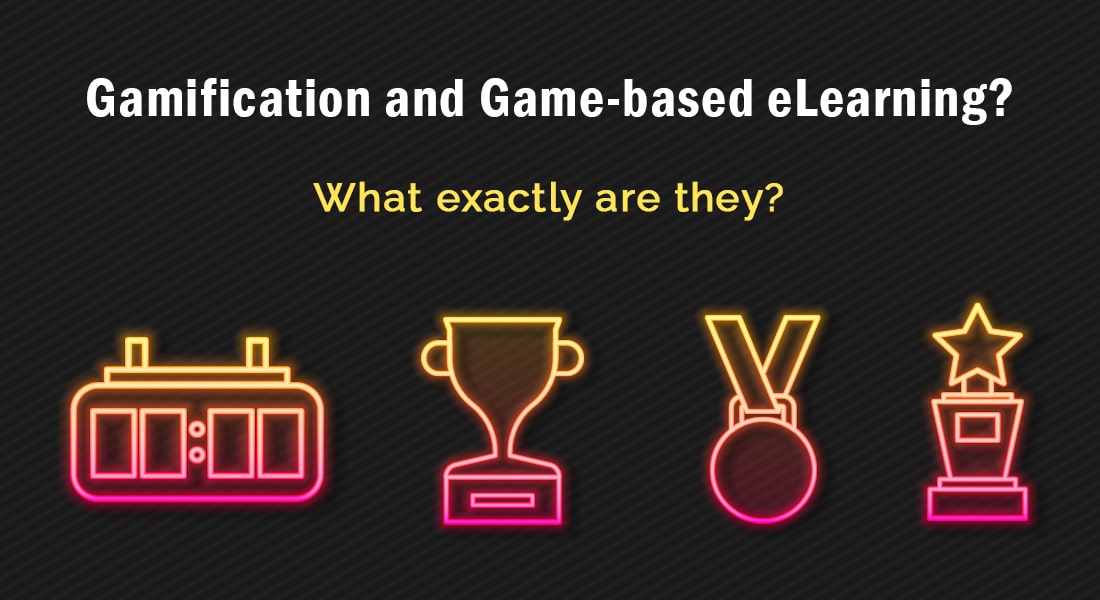Gamification – A Diminishing E-learning Trend?

Mention the word ‘gamification’ and it evokes different reactions from the different people inhabiting the e-learning universe. For L&D professionals, it might be the trend they want to catch up with in their training; for instructional designers, it is a question of how and where to put it in the course; for the management, it is the ROI for the inputs – monetary and otherwise – that go into adding this element in the course. And for the learners, reactions might be either a ‘Bring it on!’ or an ‘Oh no! Not again.’
→ Download Now: Instructional Design 101
No matter what the reaction, the fact is gamification is a hot trend in e-learning right now. On the flip side, there is also the fear that its overkill may lead to its diminished usage, a few years from now. So what does the future look like for this trend? Read on.
Gamification: A hot e-learning trend
There are several reasons why gamification has become a popular trend. For learners, the use of game elements or game mechanics in e-learning provides the motivation and engagement to achieve their goals and meet their innate desire for status and achievement. Gamification:
- Adds a surprise element, when learners do not know what to expect
- Prevents learners from clicking the ‘Next’ button even before they read the entire screen
- Captures attention
Research says gamification has resulted in a 9% increase in retention rate, 11% higher factual knowledge, and a 14% increase in skill-based knowledge amongst employees. So why does it work?
Game elements in e-learning courses attract Gen Y learners because of their elements of competition and learners’ drive to excel. It suits a generation at home with computers, gaming and social media; gamification is an extension of a familiar environment incorporated into their training.
In this age of information overload, going through an e-learning course may not motivate employees to learn. Gamification engages the learner and ensures key learning points are noticed and committed to memory.
Points, badges, and leaderboards encourage healthy competition and camaraderie among employees. Gamification also allows for employees to be in control, be self-directing, and encourages the discovery of knowledge through exploration. In short, it is learner- centric.
When learning is packaged in an attractive way through gamification, it is but natural for learners to participate in the learning and the increased engagement helps in skill building. Knowledge is assimilated and retained and can be put into practice immediately on the job. This faster transition translates into better ROI in training for organizations.
Gamification can change the way employees react to training, for instance, in sales training, if the process of learning about a product is made more engaging through gamification, it will enable the sales person sell the product better. Sometimes, gamification can make the course so interesting that employees commit even their personal time to the course.
With gamification showing positive results, organizations, L & D professionals, and even e-learning providers tend to include it in e-learning courses without understanding how learners learn or the psychology of how it affects learner engagement.
Gamification can succeed, provided it is not used just because it is a fad. Nor should it be viewed as the silver bullet that can make training instantly effective. The caveat here is avoiding the pitfalls while including gamification in e-learning so that it brings the results it is supposed to.

Instructional Design 101
A Handy Reference Guide for eLearning Designers
- eLearning standards
- Streamlined instructional design process
- Effective assessments
- And More!
Pitfalls to avoid
Gamifying everything: Often in the endeavor to add game elements to the course, there is a tendency to gamify everything. Avoid this by deciding which elements can work best with gamification and which can be delivered using other methods. The best strategy is to blend gamification with other instructional delivery methods.
Shifting the focus away from learning: The concept of having ‘fun’ overshadows the real purpose behind the training. Organizations lose track of the learning motive and forget that the real purpose is to engage the learner. The focus should remain on learning.
Believing every employee will love gamification: Do not make the mistake of assuming every employee will love a gamified learning experience. Include gamification if you strongly feel it will meet the learning outcomes, but do not expect all your employees to love it. Provide them an alternative but make them accountable for the learning.
Failing to measure the outcomes: Gamification can give you analytics of how your employees are learning –learner engagement, number of employees giving correct or wrong answers, etc. You should monitor this data to see how effective gamification is and whether it is giving the expected results.
Avoiding these pitfalls and following some best practices will ensure gamification is a success.
Best practices
Gamification will bring the desired results if:
- It is tied to the learning objectives – Every technique you use must be designed to help learners achieve the desired outcomes of the course.
- It provides immediate and real time feedback to employees/players – The feedback provided, whether positive or negative, should help the employee succeed in the gamified environment so that he learns how to transit these behaviors and skills to his job.
- It matches the player’s capabilities (not too easy not too difficult) – The game elements should not be too difficult that they overwhelm the learner nor too easy that they insult his intelligence.
- It incentivizes employees to engage in it – Provide prizes and rewards unless employees are intrinsically motivated.
- It is aligned to business goals – Gamification should tie up with the business objectives of having a training program, improve efficiency, minimize mistakes, and increase engagement.
- Management is on board with it – Managers may dismiss gamification as a waste of time and not realize its benefits. Getting them onboard by educating them and allowing them to experience it themselves will be a good idea.
To conclude
On the question of whether gamification is a diminishing trend, it certainly does not seem so. Organizations that use e-learning will be the major contributors. This is provided, they do not fall into the trap of using gamification just to look trendy or sugar-coat their e-learning. According to Brian Burke, research vice president at Gartner and the author of Gamify, gamification will sustain its popularity provided its objectives are the meeting point where the business objectives and the players’ objectives align. As Burke says, “It can only be successful in helping people to achieve their own goals, and when individual goals are aligned with organizational goals, everyone wins.”
What’s your take? Write in your comments.





![Gamification: Changing the Way Learning Takes Place [Video]](https://blog.commlabindia.com/hubfs/Imported_Blog_Media/gamification-for-learning.jpg)